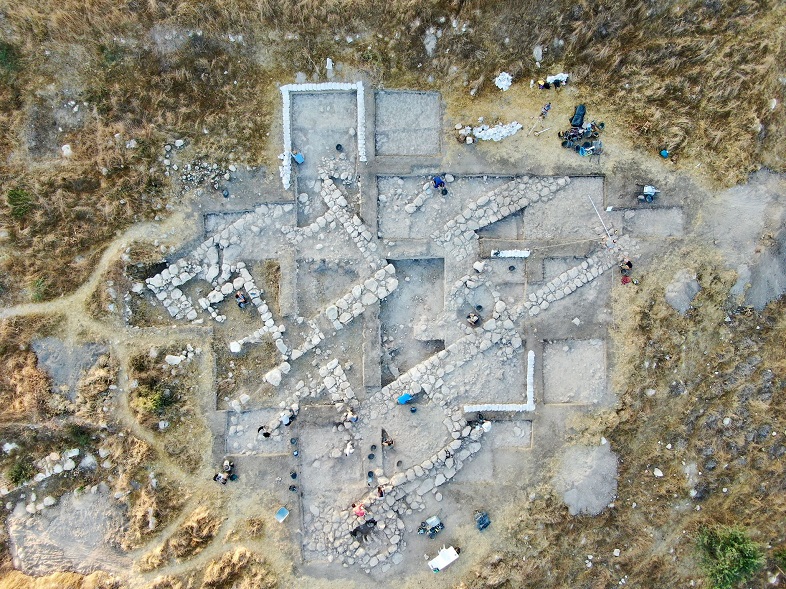Ariel University Concludes Historic Excavation Season at Tel Burna Archaeological Site
Ariel, Israel – In a remarkable achievement that sheds new light on ancient Canaanite civilizations, students from Lipscomb University in Nashville, Tennessee, have played a pivotal role in groundbreaking discoveries at Israel’s Tel Burna. Collaborating with Ariel University and the Land of Israel Studies and Archaeology department, these students unearthed a monumental building and a rare Canaanite cult complex, revealing religious practices over 3,000 years old. Despite regional conflicts, the final excavation season from June 23 to July 12, 2024, uncovered intricate pithoi and vibrant cultural practices from a Judean border town of the biblical period, marking the end of 14 seasons of pioneering archaeological work.
Significant Discoveries and Historical Insights
The Tel Burna site, located in the Shephelah region, has provided invaluable insights into a Canaanite city from the 13th century BC and a Judean border town from the biblical period. Among the remarkable findings were several giant storage jars known as pithoi. These pithoi, prevalent in the Bronze Age Mediterranean region, were discovered both as imported items from Cyprus and locally manufactured, offering a surprising twist for archaeologists.

Professor Itzhaq Shai, the project’s director, expressed his excitement: “The discovery of these pithoi at Tel Burna, especially those locally produced after a long hiatus, provides unique insights into the trade and cultural exchanges of the Late Bronze Age. It reflects the ingenuity and adaptability of the local potters of that era. Uncovering the monumental buildings, fortifications, and agricultural installations has given us a clearer picture of the historical significance of this site.”
Global Collaboration and Cultural Exchange
This season underscored the importance of international collaboration in archaeological research. Professors and volunteers from the Czech Republic, Canada, Indonesia, Switzerland, the UK, Norway, Croatia, Taiwan, Australia, New Zealand, India, and the United States joined the excavation team. Their diverse perspectives and expertise were crucial to the project’s success, highlighting the universal appeal and significance of cultural heritage preservation.
Educational Collaboration and International Participation
Professor Steven Ortiz, Director of the Lanier Center for Archaeology at Lipscomb University and co-director of the Tel Burna Excavation Project, emphasized the benefits of bringing American students to Israel: “Our students have shown incredible commitment, working diligently to uncover the rich history of this land, the Holy Land. Despite the ongoing regional conflicts, their experience in Israel has been both safe and profoundly educational. We are honored to strengthen the enduring bonds between our institutions. The warmth and gratitude expressed by our Israeli colleagues have deeply moved us, reinforcing the value of our continued collaboration in these challenging times.”
One of the research questions this summer was the residence of religious leaders. After uncovering a previous Canaanite cultic complex, the team discovered a potentially large building complex dating to the Late Bronze Age (1550-1200 BCE). This building, consisting of long hallways or chambers with auxiliary rooms, some containing storage jars, might have served as the priests’ house or an administrative building for collecting offerings. Professor Shai added, “Such a large complex had to have served the broader region.”
Overcoming Challenges
The participation of international students, undeterred by regional conflicts, underscores their passion for archaeology and international cooperation. “The resilience and enthusiasm of our students have been truly inspiring,” added Professor Itzhaq Shai. “Their contributions have been invaluable in uncovering significant archaeological findings and fostering global understanding.”
Concluding the Excavation
This final season revealed further details about the site’s fortifications, monumental buildings, and agricultural installations. The discovery of pithoi, both imported and locally made, sheds light on the trade dynamics and cultural influences of the Late Bronze Age. These giant storage jars, some used in ceremonial contexts, illustrate the complex interplay between local and foreign artifacts and their impact on local practices.
Looking Ahead
As this project concludes, plans are already underway for a new project at a different location next year. We welcome international collaboration, partners, archaeologists, volunteers, and sponsors/donors. For more information or to discuss future partnerships, please contact Professor Itzhaq Shai at itzhaqsh@ariel.ac.il
